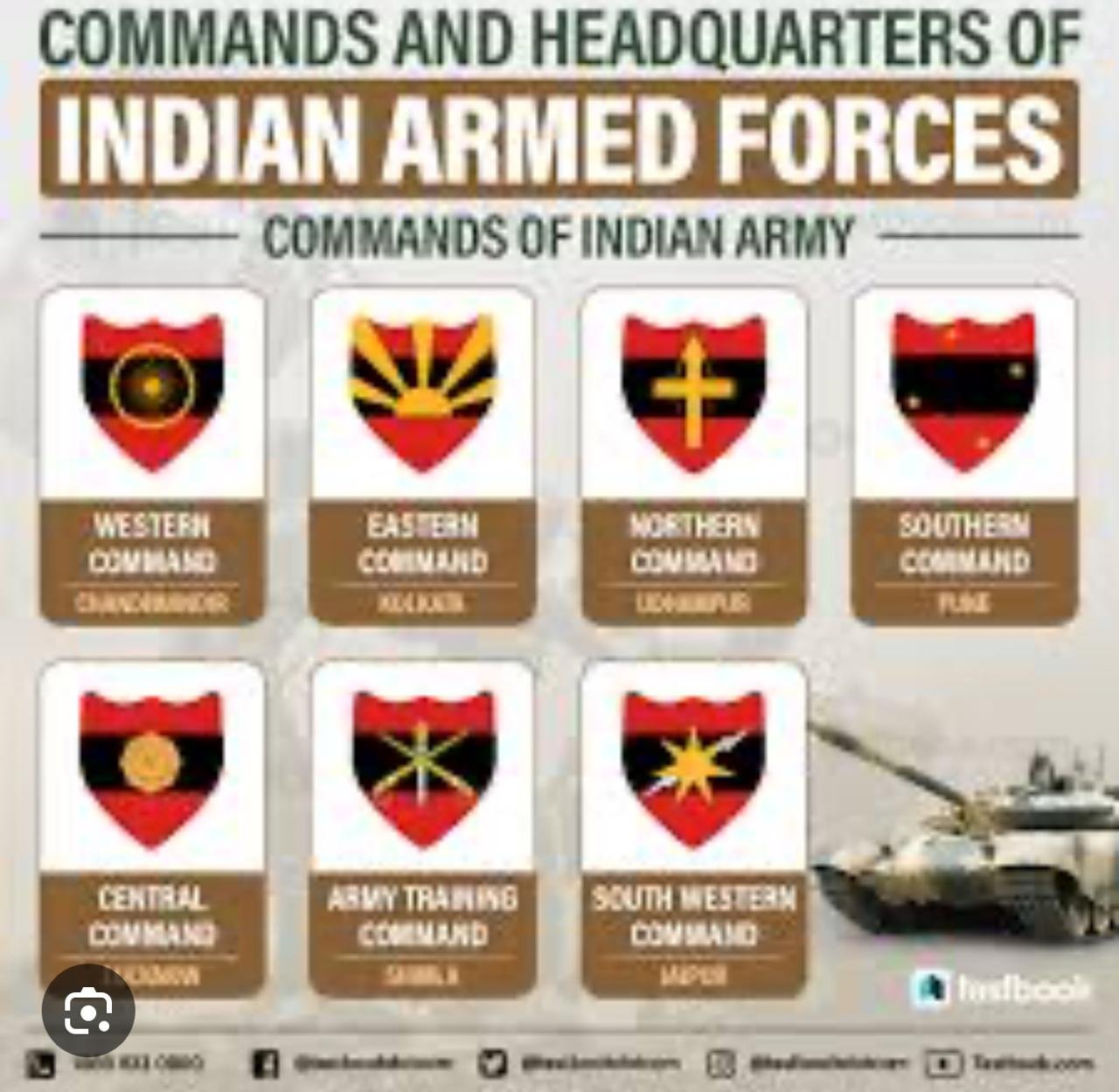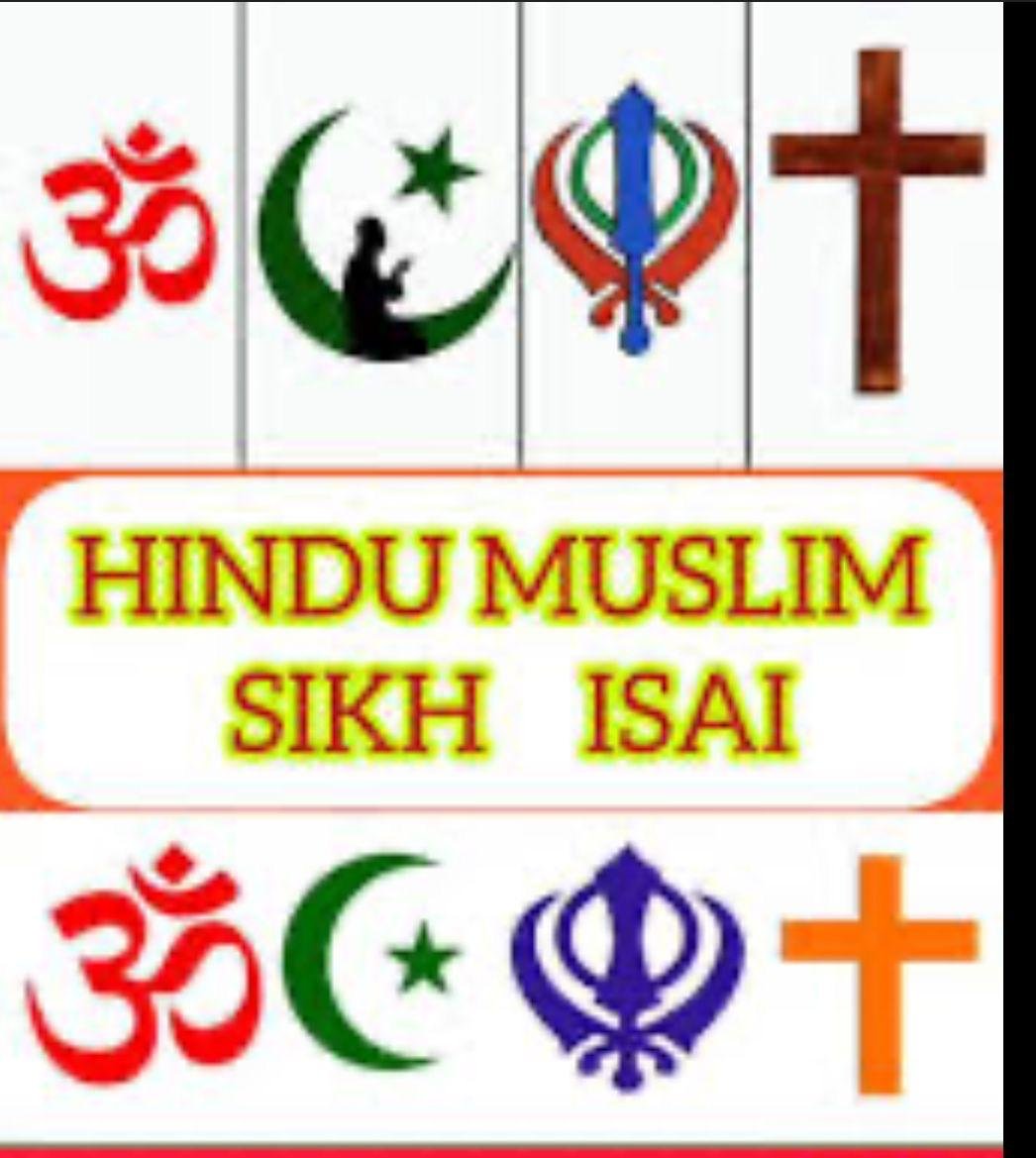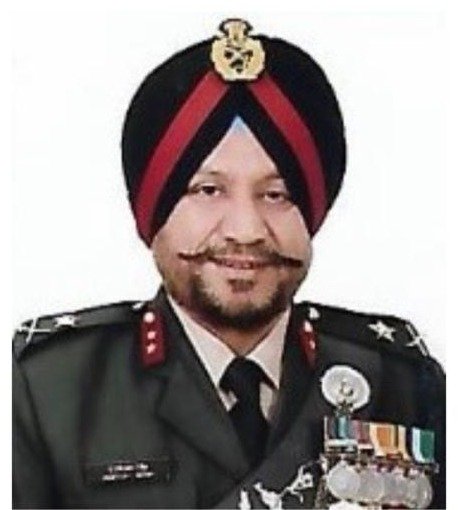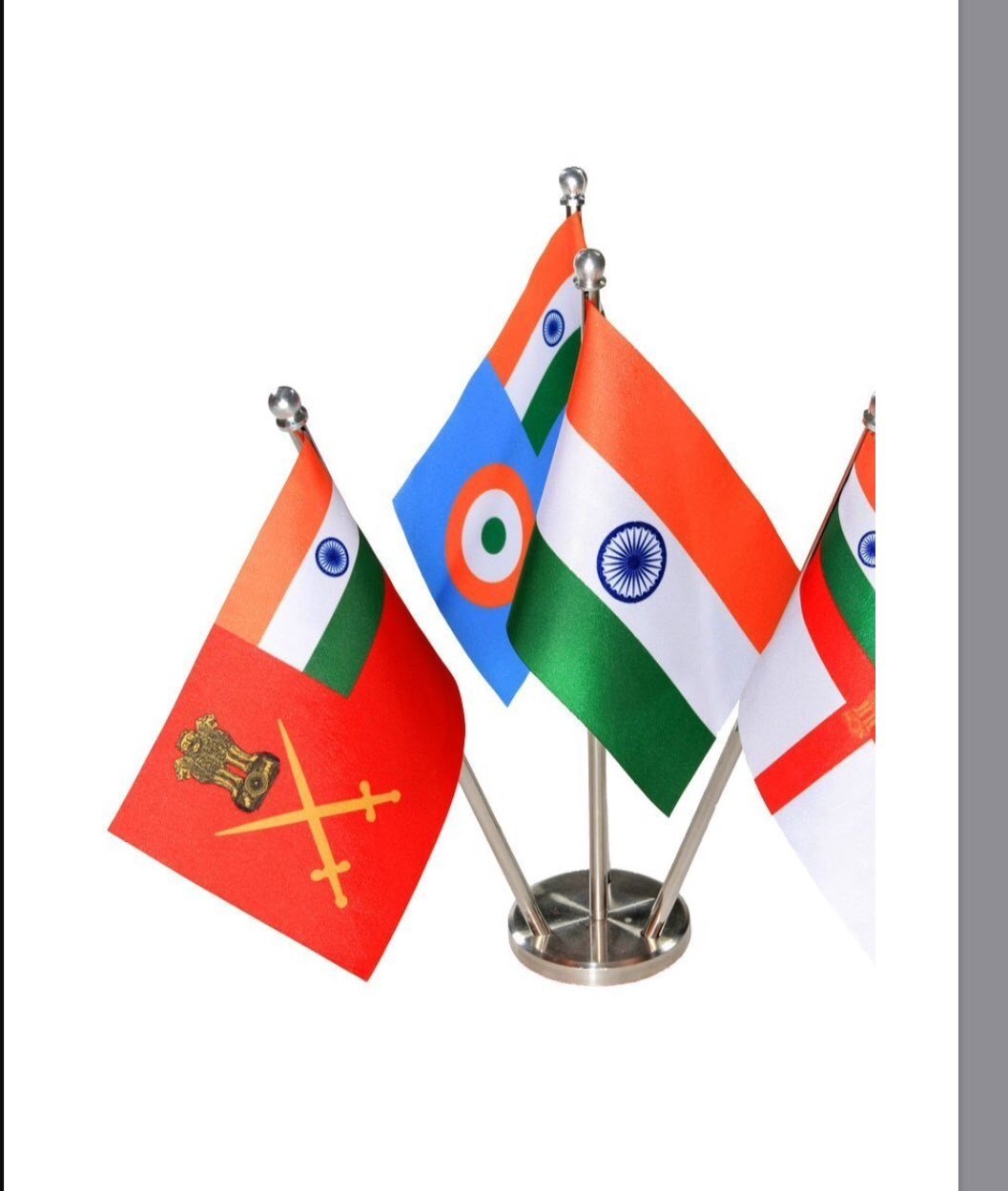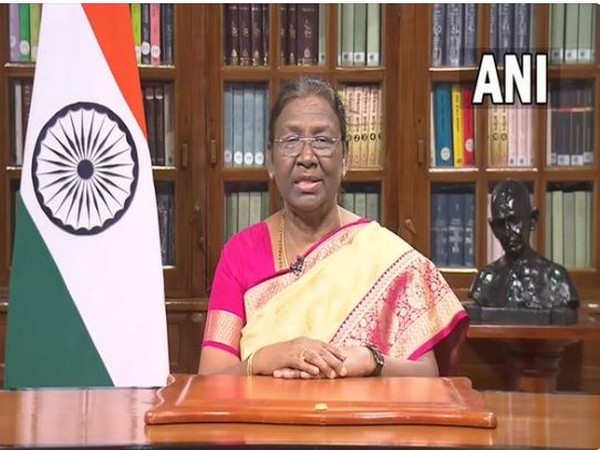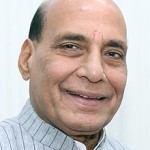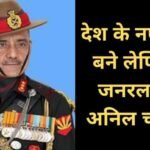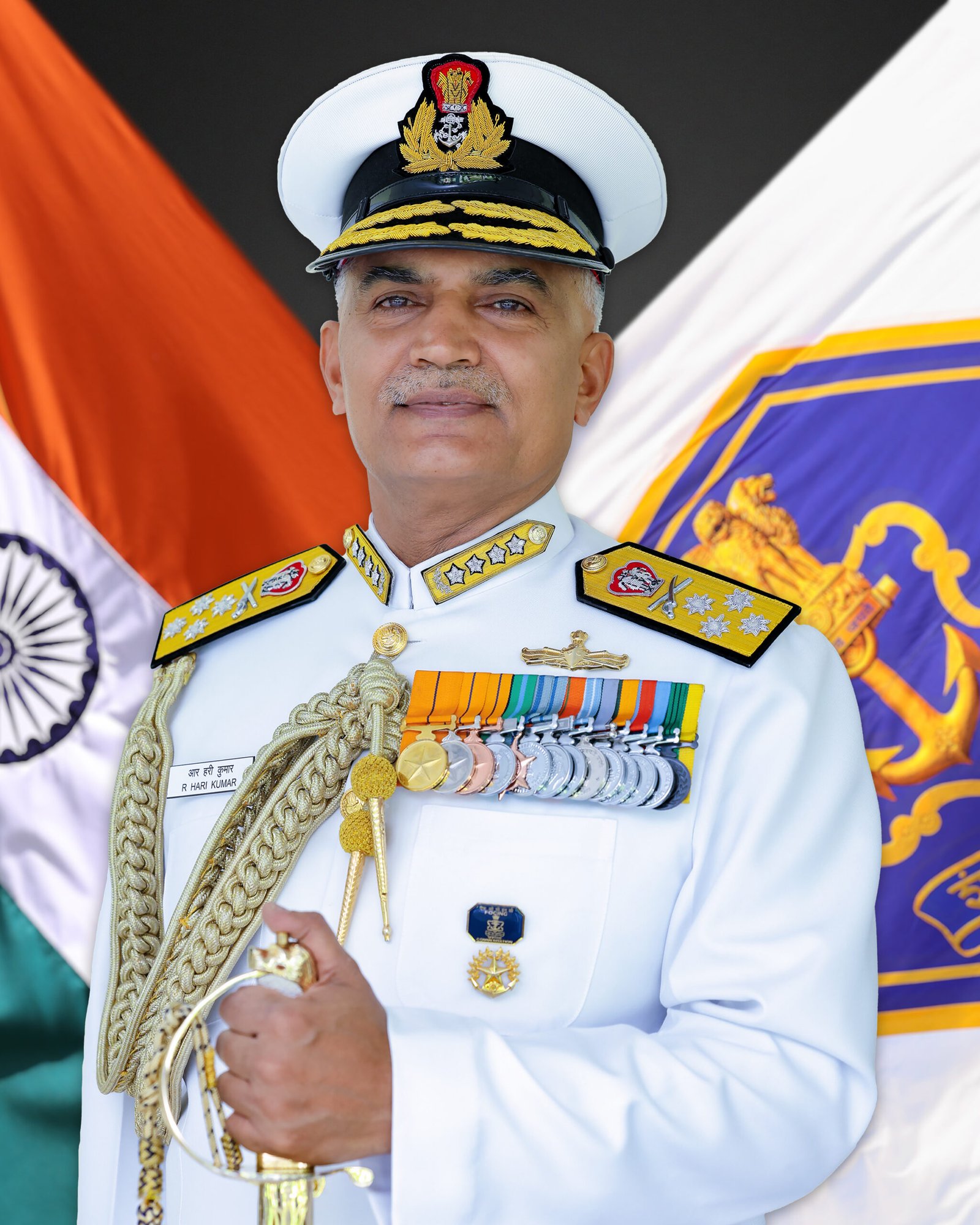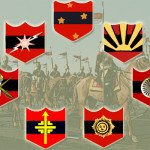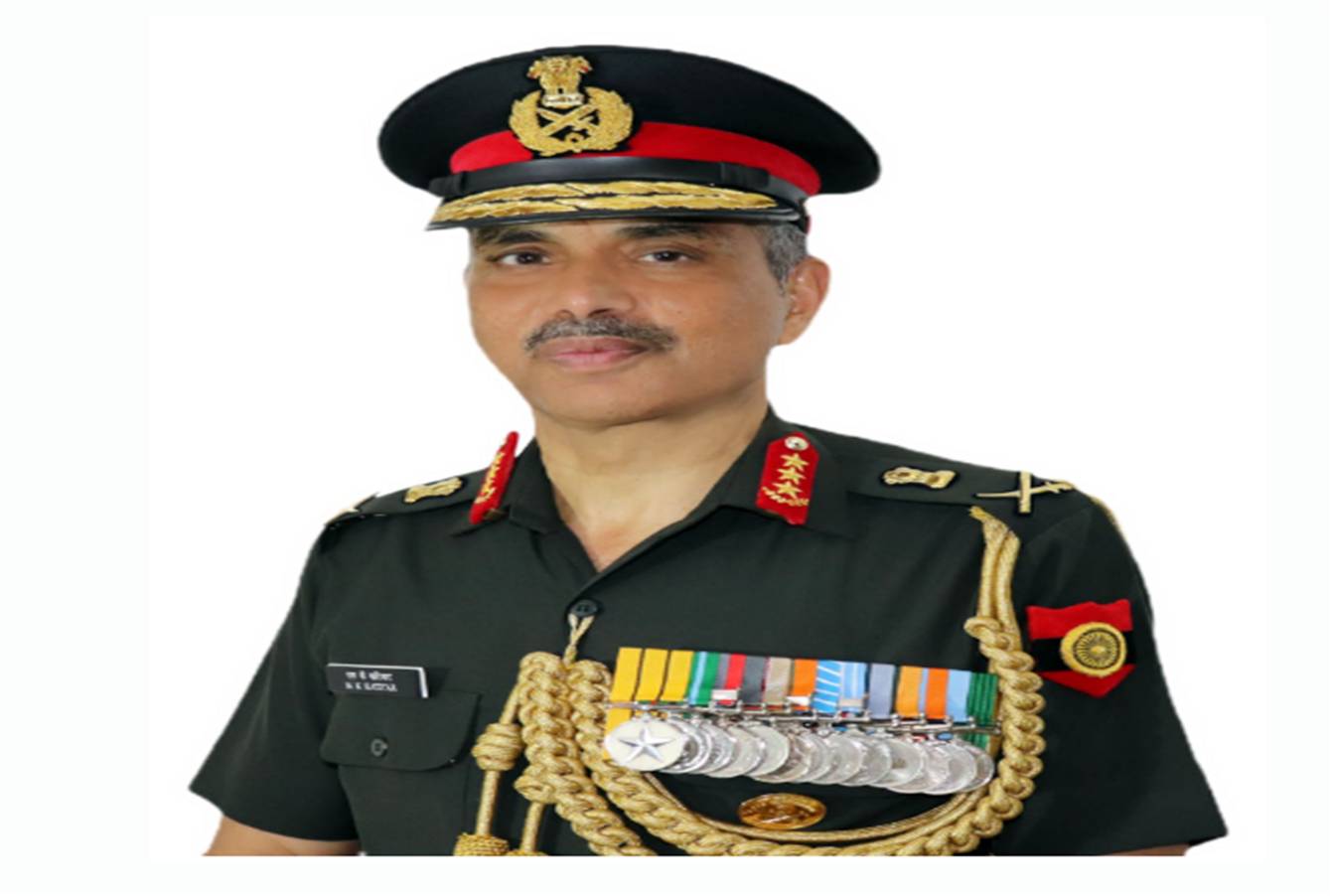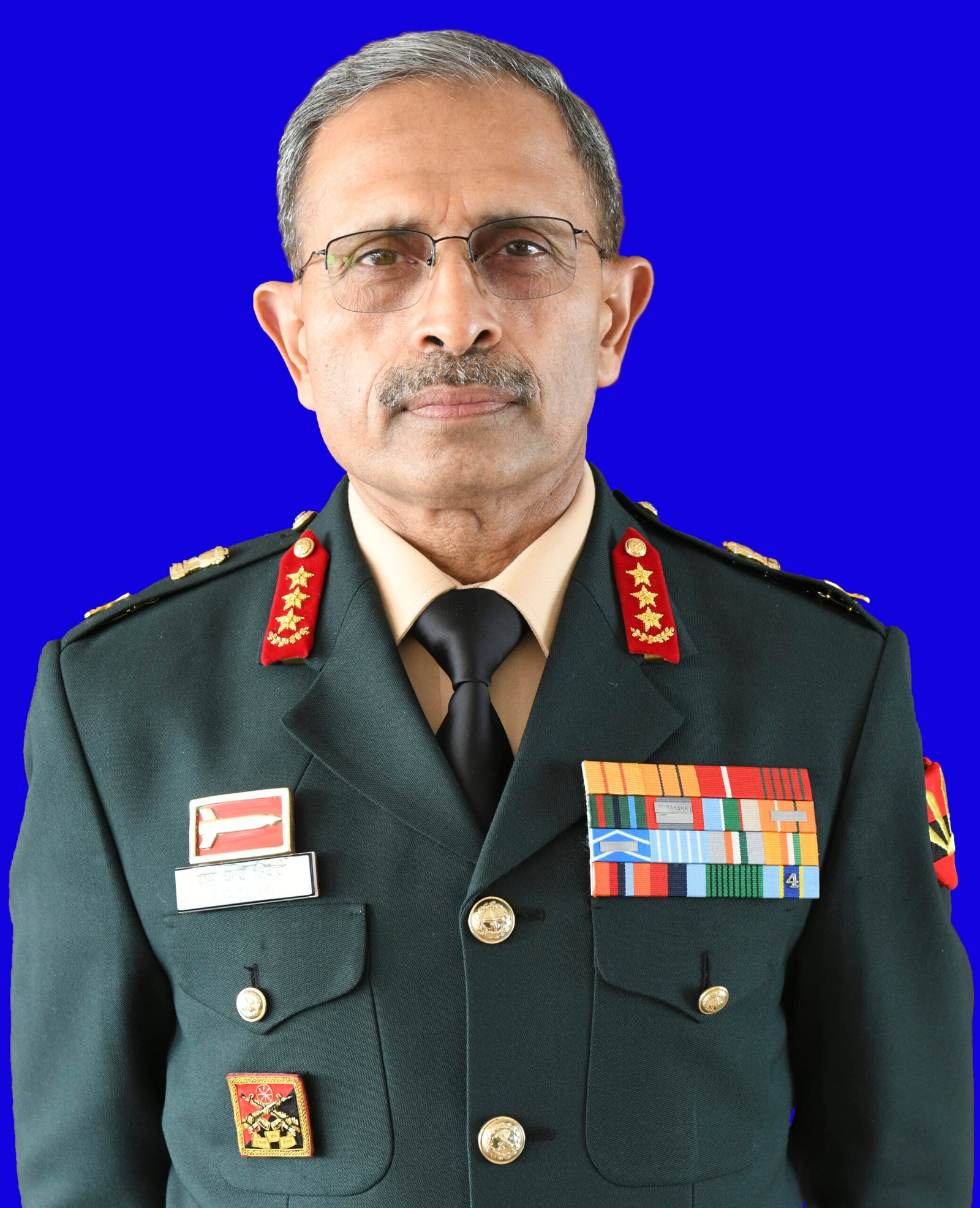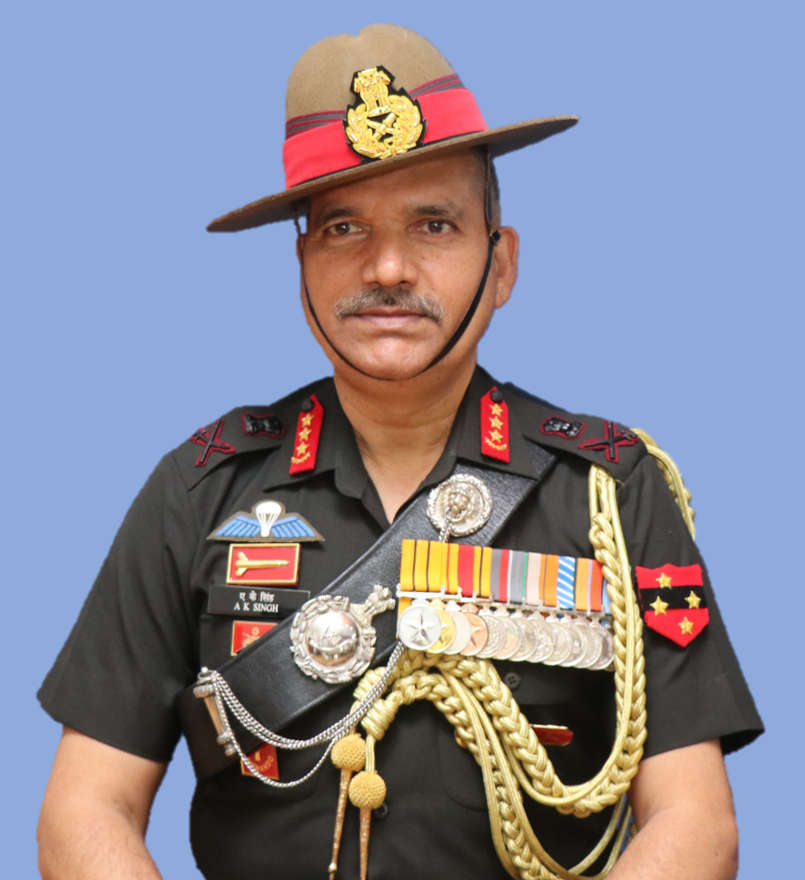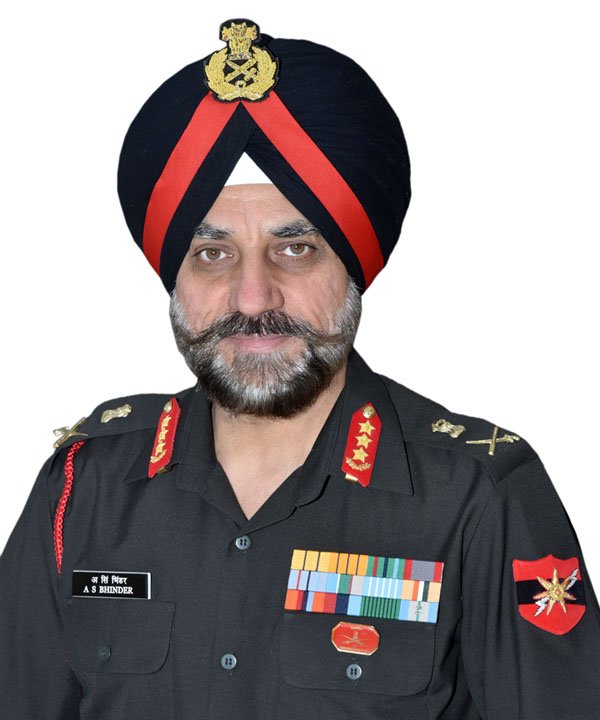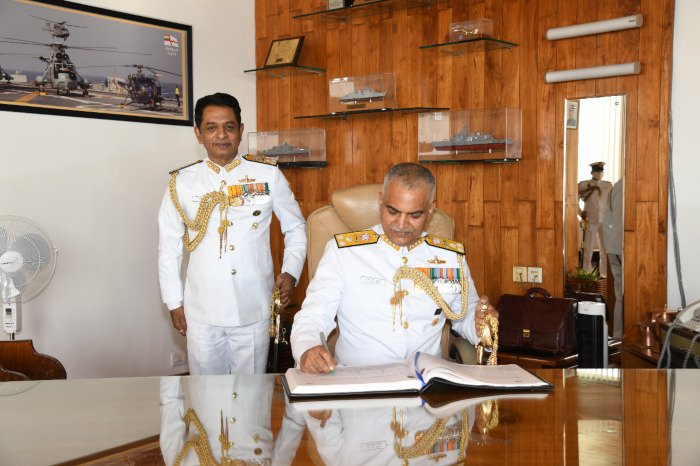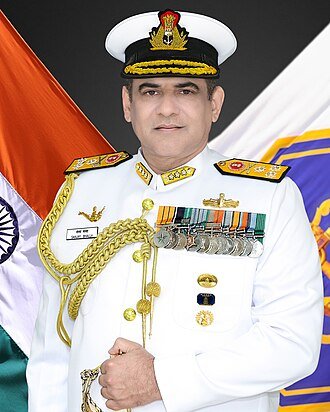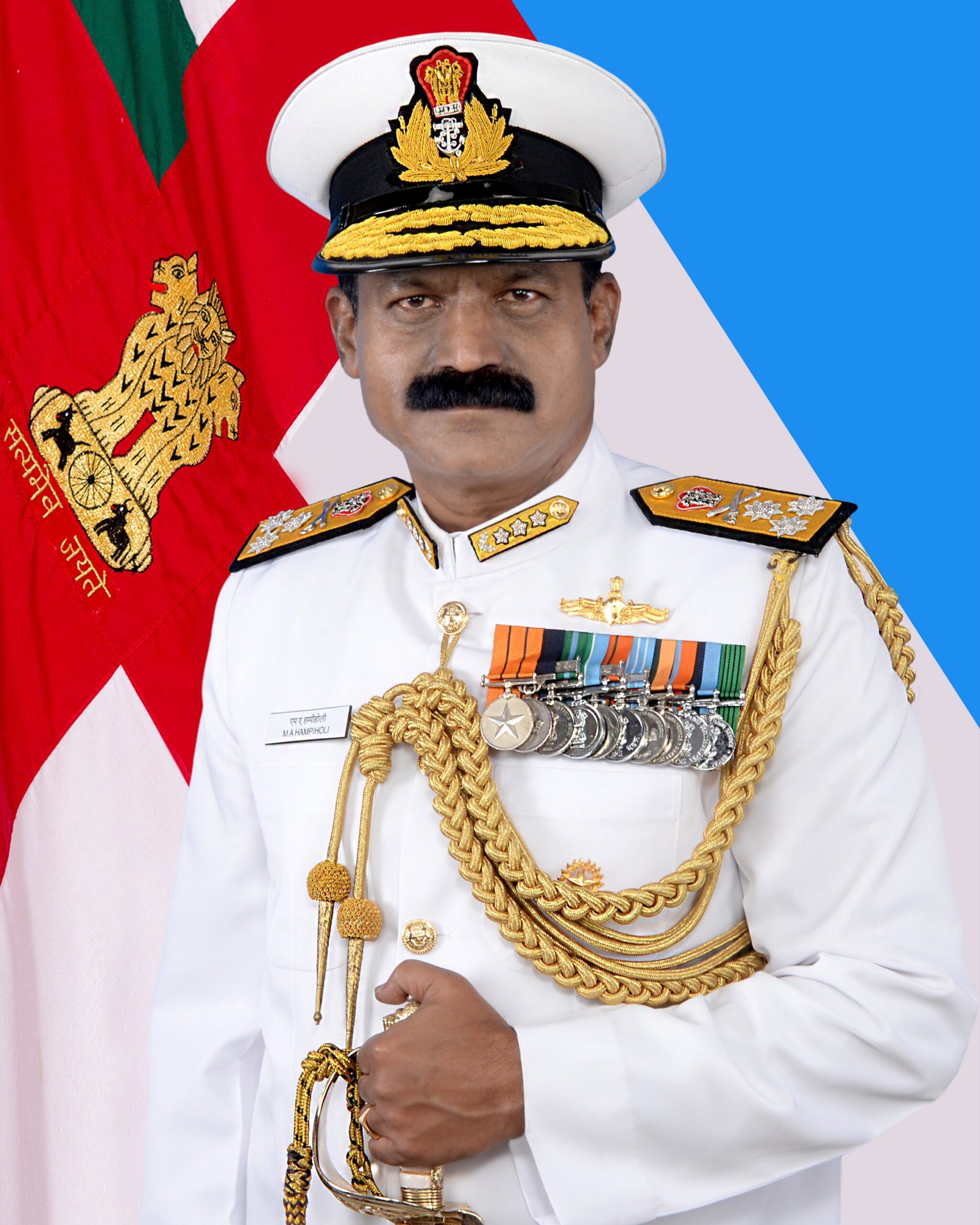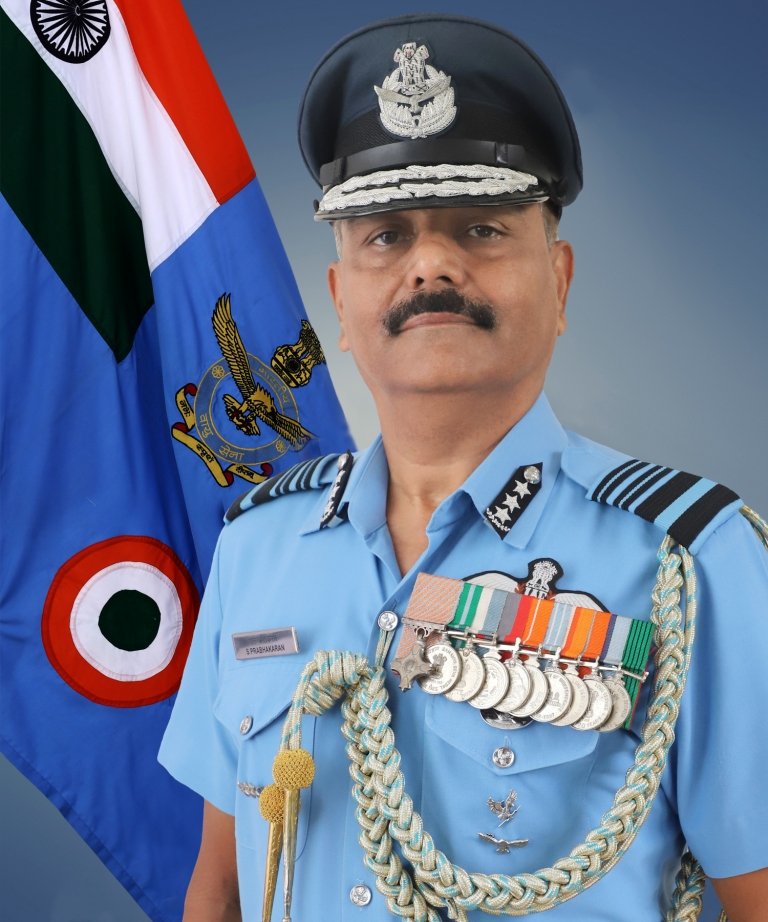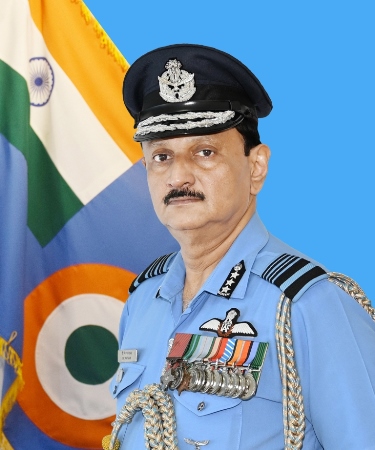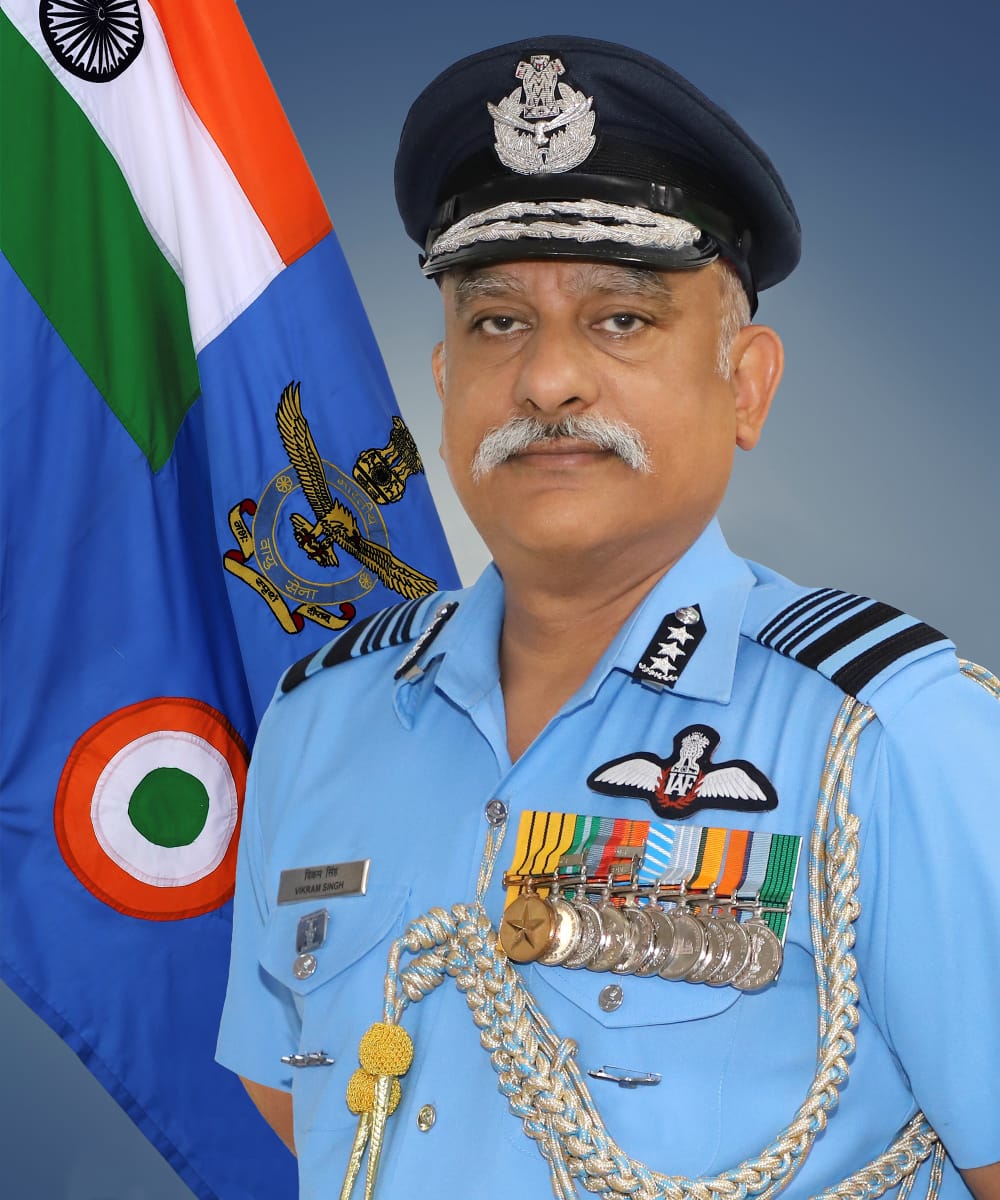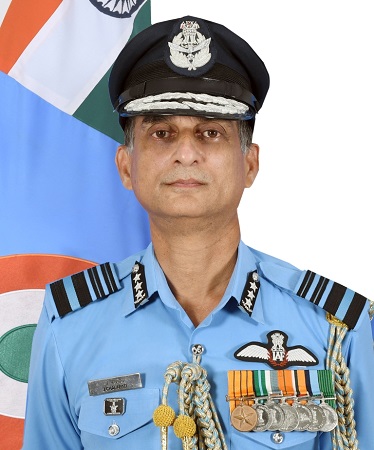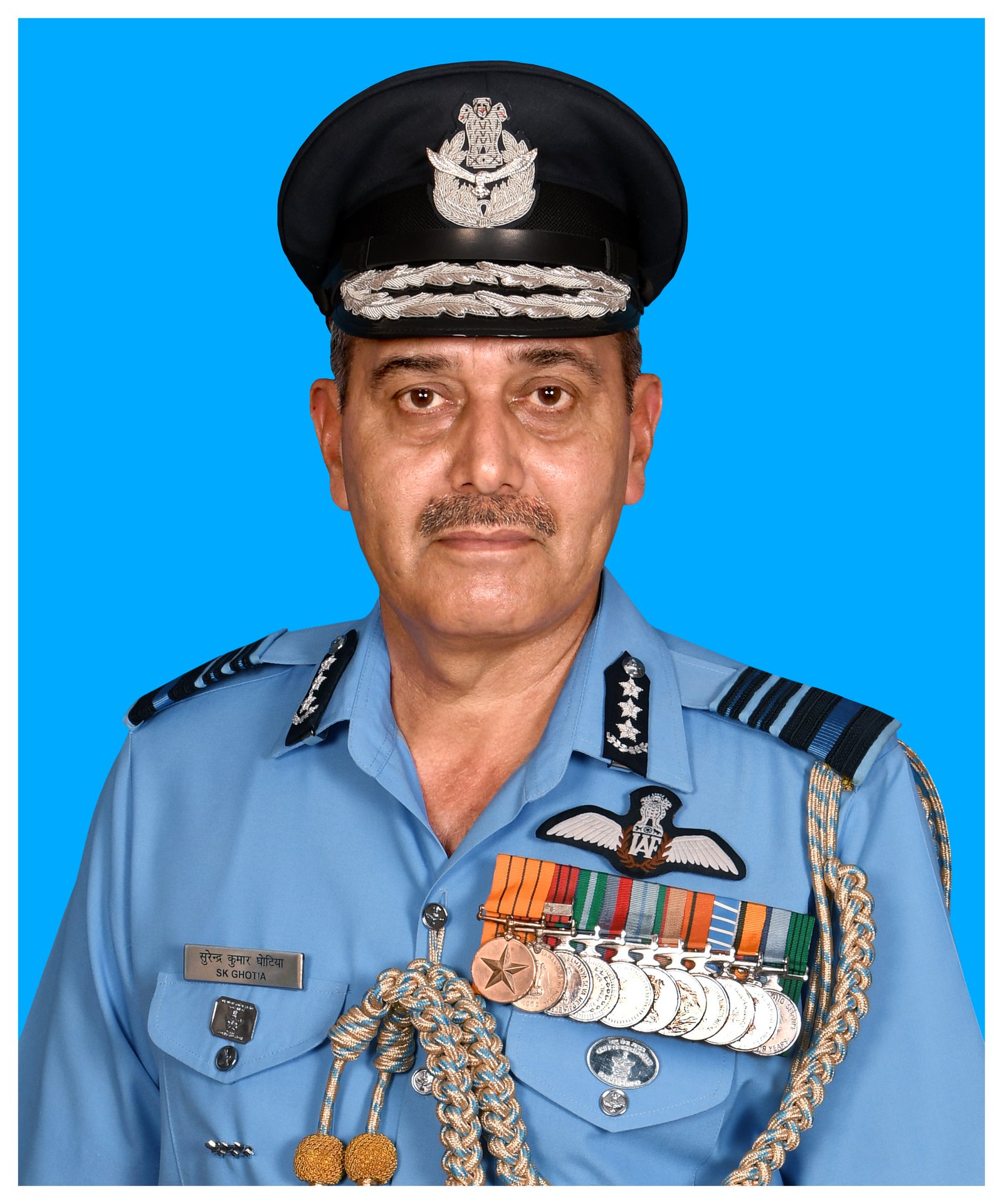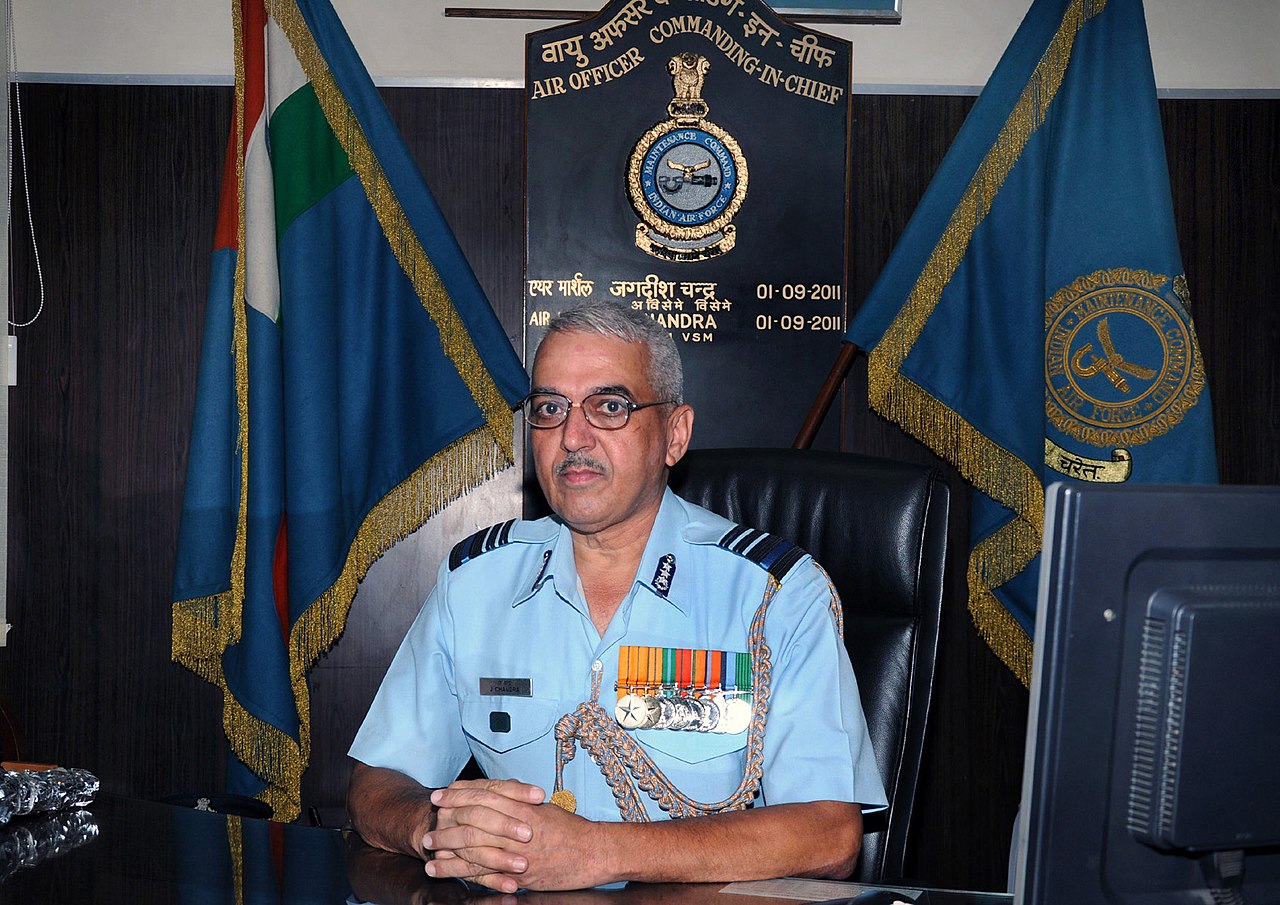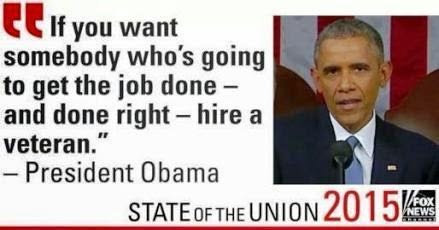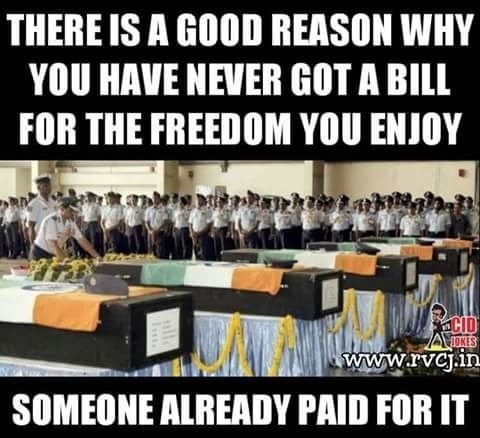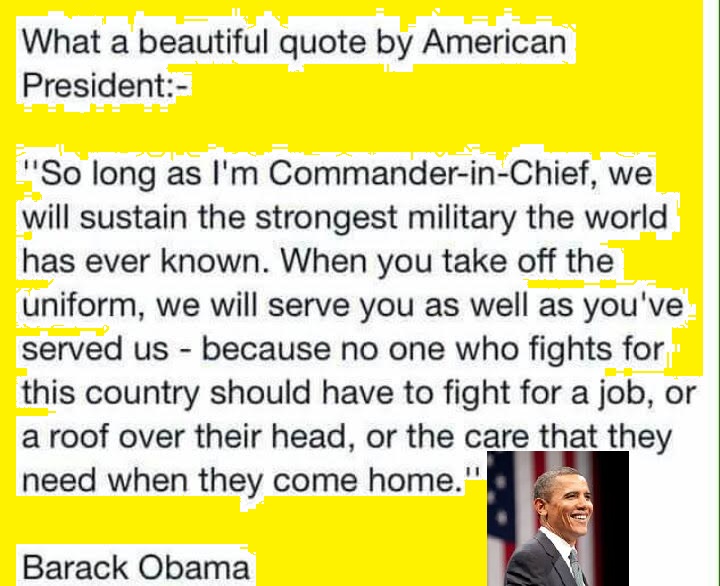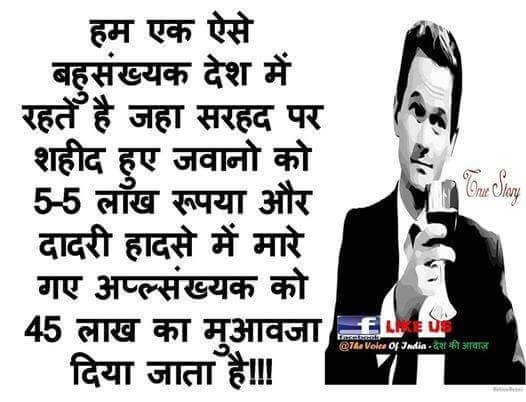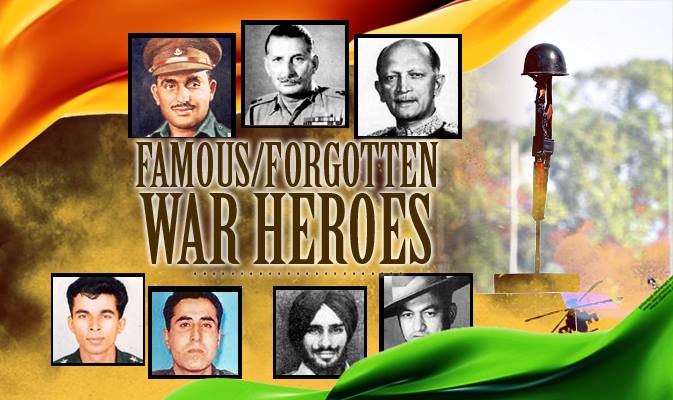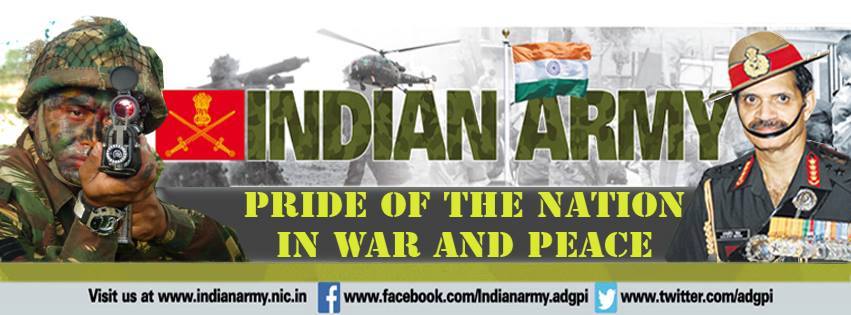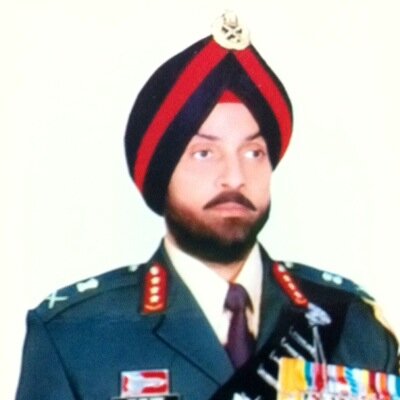
An assessment of military leadership

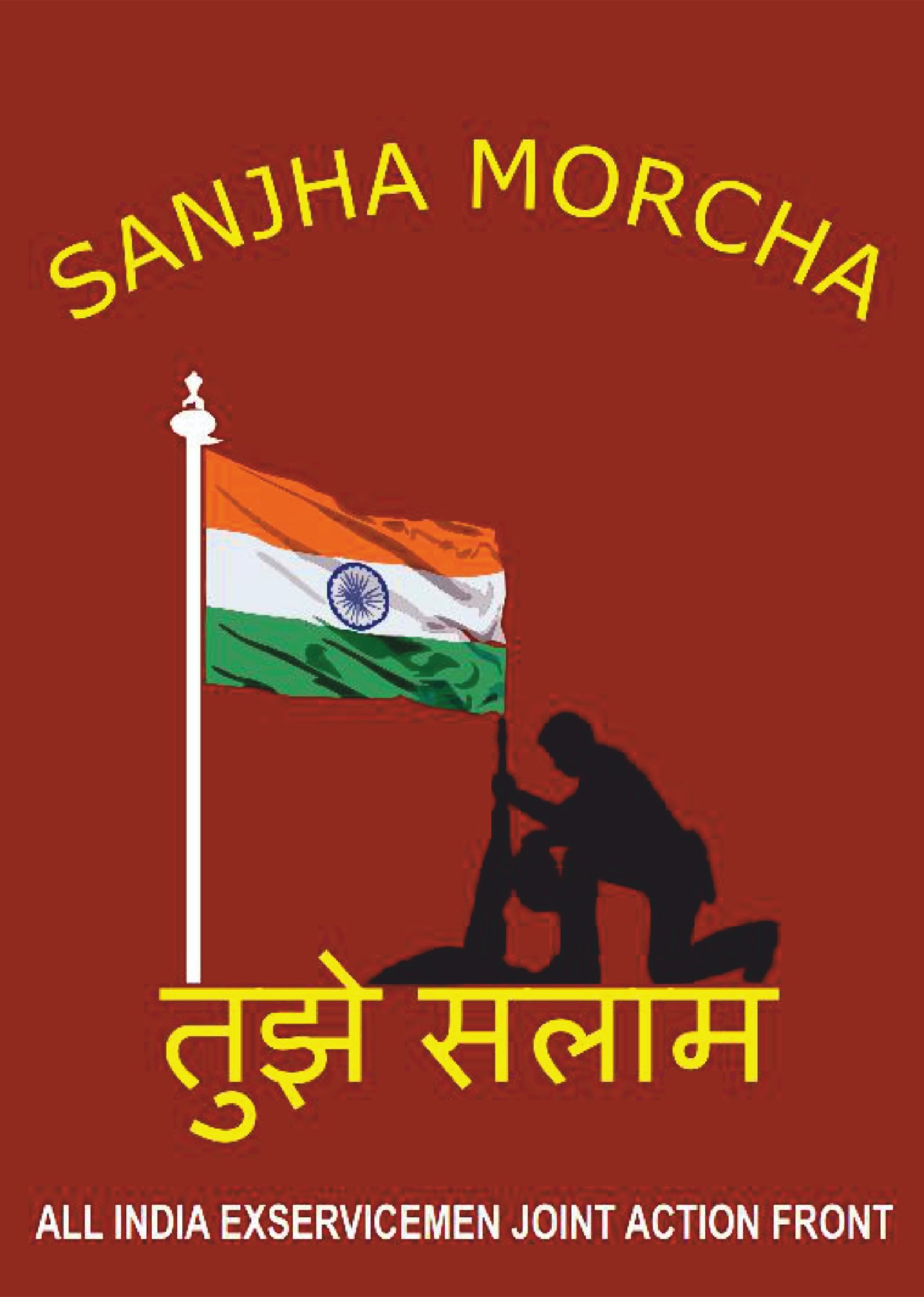
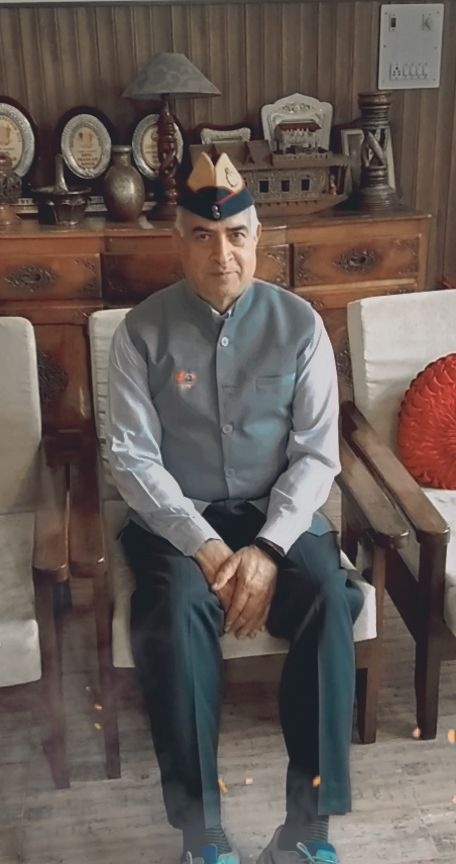
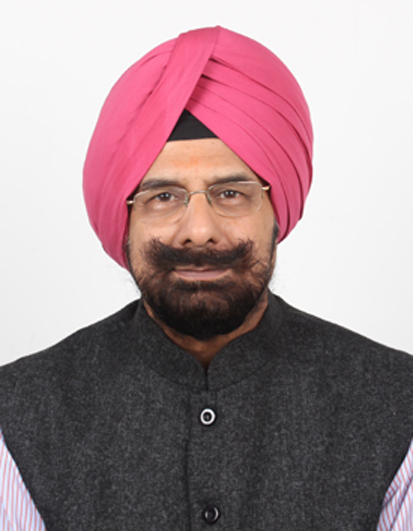


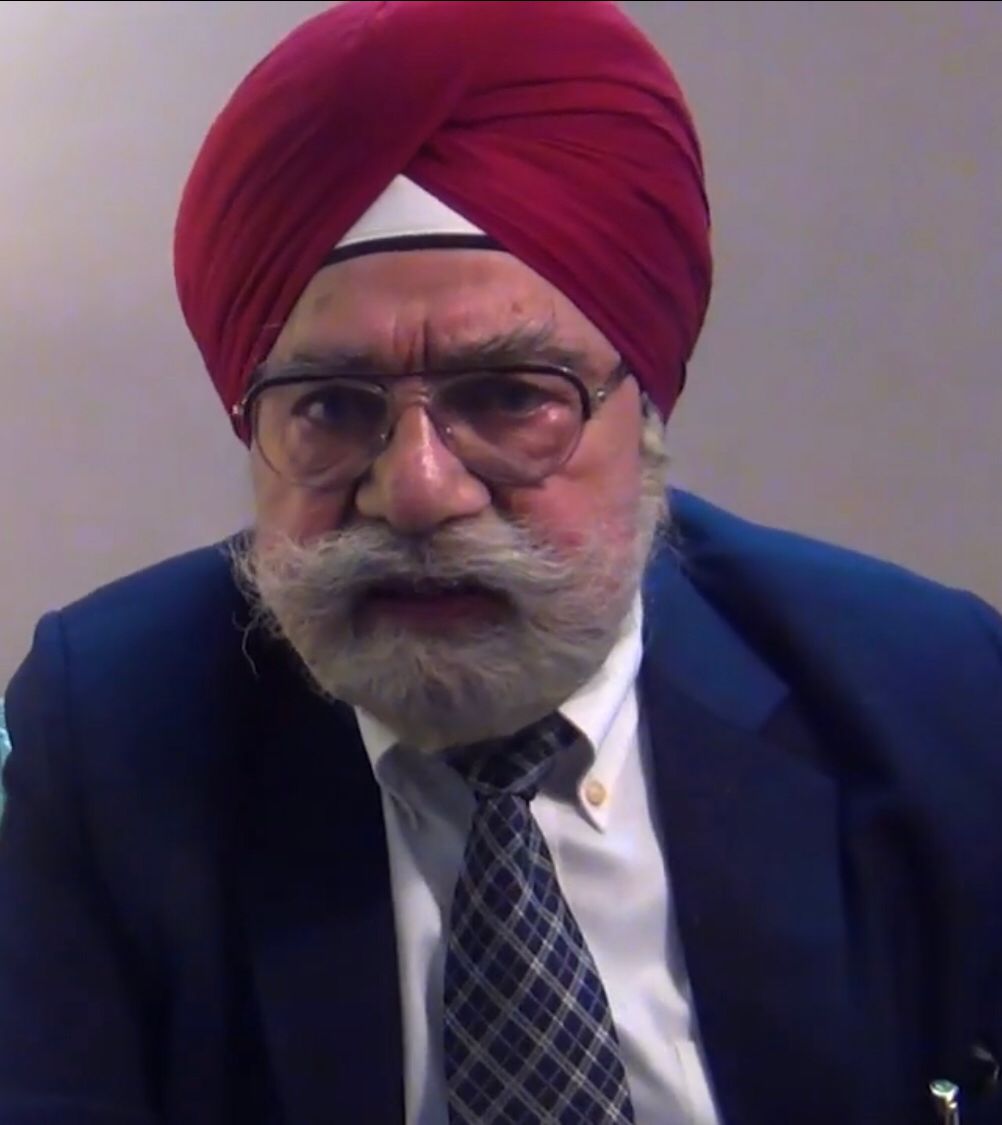


NEW DELHI: India is laying the groundwork to test a high-range BrahMos supersonic cruise missile, capable of striking targets more than 800 km away, a person familiar with the programme said.

The missile is likely to be tested by the year-end.
India has already extended the range of the three-tonne missile from 290 km to 400 km and successfully test-fired the variant in March 2017. Increasing the missile’s range to 400 km — and now 800km — became possible after India’s induction into the Missile Technology Control Regime in June 2016.
Prior to that, India was bound by restrictions that limited the range of the missile, which is an Indo-Russian joint venture, to less than 300 km.
“It will be a significant leap forward for the BrahMos project. Air force fighters will be able to attack targets from increased standoff ranges,” said another official tracking the project.
The Defence Research and Development Organisation had announced in February 2017 that a missile variant with a strike range of 800km was under development.
The configuration of the existing missile is being tweaked to enhance its range to 800 km, he said.
BrahMos variants can be launched from land, air, sea and under water. India successfully launched the world’s fastest supersonic cruise missile from a Sukhoi-30 warplane for the first time against a target in the Bay of Bengal in November 2017.
“The Sukhoi has a range of 3,600 km. Arming it with an 800-km range missile will increase its reach tremendously, and even more, considering the option of mid-air refuelling,” the official said.
The missile’s land and naval variants are already in service. At least two Su-30 squadrons with 20 planes each are likely to be equipped with the air-launch variant BrahMos missile, 500 kg lighter than the land/naval variants.
Two Su-30 jets have been modified by the Nasik division of the Hindustan Aeronautics Limited to carry the 2.5-tonne missile that flies at nearly three times the speed of sound.
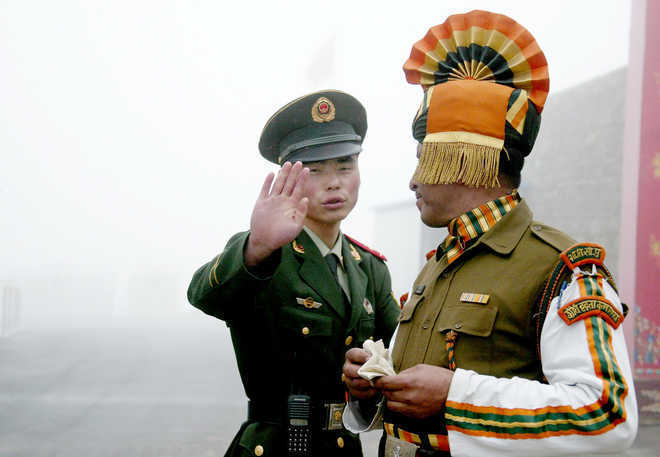
Indian and Chinese troops were engaged in a face-off at Doklam for over three months last year. AFP file
New Delhi, January 18
The Congress on Thursday accused Prime Minister Narendra Modi and External Affairs Minister Sushma Swaraj of misleading the nation over Chinese troops occupying Doklam plateau, saying Indian security and strategic interests have been compromised.
(Follow The Tribune on Facebook; and Twitter @thetribunechd)
“The satellite imagery and media reports suggest that China has established military establishments in Doklam near Indian borders which indicates that India’s security and strategic interests have been compromised,” Congress spokesperson Randeep Singh Surhewala told the media here.
Surjewala said: “It seems that the government was snoozing while the Chinese troops occupied the Doklam plateau as suggested by satellite images. And it seems China is planning Doklam 2.0 like retreat near the Indian borders.”
Accusing Modi of mastering the art of rhetoric, the Congress spokesperson said: “The Prime Minister has mastered the art of electoral rhetoric as he has failed miserably to ensure the protection of our borders.”
Showing the satellite images, Surjewala said China had constructed a two-storey watch tower, seven helipads and several military establishments in Doklam. “What is the government doing as China has occupied the entire Doklam plateau? Is the government, Prime Minister, Defence Minister, aware about these constructions?”
Slamming Sushma Swaraj, Surjewala said the Ministry of External Affairs issued a statement then, saying the troops of both the countries were doing expeditious disengagement.
“Even Sushma Swarajji said (this) in Parliament. And when we asked about the details, she said the troops of both countries were returning to their posts. At that point, there was no reason to question her statement,” he said.
He said after the tensions at Doklam were resolved, the Chinese Foreign Ministry had said that while it had withdrawn the troops, it shall keep on patrolling the area.
The Congress leader demanded to know how the issue of tri-junction at Doklam would be decided in future when the China had occupied the entire plateau.
Surjewala said: “In October, Modiji announced at a public rally that Doklam issue as a victory. However, the satellite imagery released in media reports suggest that Chinese troops have constructed military establishments.
Indian and Chinese troops were engaged in a face-off at Doklam for over three months last year. — IANS
President Ram Nath Kovind presents the country’s highest peacetime gallantry award, the Ashok Chakra, posthumously to the wife and mother of Corporal Jyoti Prakash Nirala, a Garud commando of the Indian Air Force, and then breaks down after the brief ceremony during the 69th Republic Day Parade in New Delhi on Friday. PTI
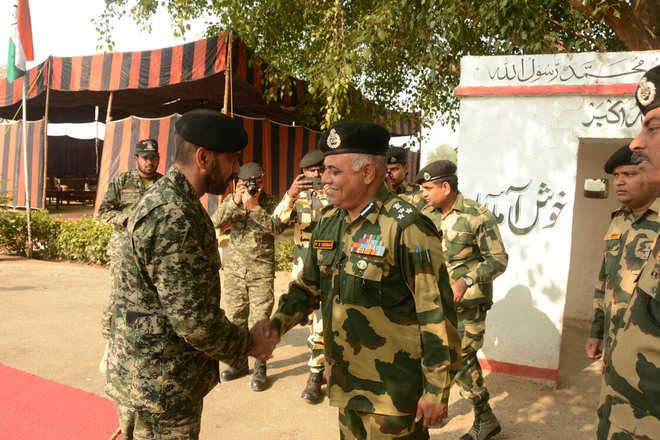
Amir Karim Tantray
Tribune News Service
Jammu, January 25
To ease the tension along the International Border, the Border Security Force (BSF) and Pakistan Rangers today held a sector commander-level flag meeting at the octroi post of the Suchetgarh sector in Jammu.During the half-an-hour meeting, held at the request of Pakistan Rangers, the BSF raised the issue of recent unprovoked ceasefire violations by Rangers which killed seven civilians and two BSF personnel.Giving details, a BSF spokesperson said, “The BSF strongly objected to dastardly sniper attacks on two BSF men on January 3 and January 17. The unprovoked firing and shelling, targeting a number of villages, innocent civilian and properties, was also raised. The BSF registered a strong protest with a message that such provocative acts are unacceptable and will not be tolerated.”This was the first flag meeting between the BSF and Rangers this year. Last time, both the forces had met on September 29, 2017, over the issue of maintaining the sanctity of the ceasefire.The BSF delegation, comprising five officers, was led by DIG, BSF, Jammu sector, PS Dhiman. The Pakistani team of 10 officers was led by Sector Commander, Chenab Rangers, Sialkot, Brigadier Amjad Hussain. Several wing commanders were also part of the Pakistani delegation.“The meeting is the first sector commander-level meeting between the two border forces since heavy shelling and firing erupted along the International Border last week to which the BSF gave a calibrated reply. During the firing and shelling, the BSF successfully foiled a number of infiltration attempts from Pakistani soil while killing one intruder on January 4 in the Arnia sector,” the BSF spokesperson added.The recent skirmishes along the border started on the January 17-18 intervening night and lasted up to January 22. Two BSF soldiers and seven civilians died in Pakistani firing. During this period, four soldiers also died in Pakistani firing and shelling along the Line of Control.Since January 22 morning, the International Border has been witnessing calm. Today’s flag meeting is expected to ensure peace on the border
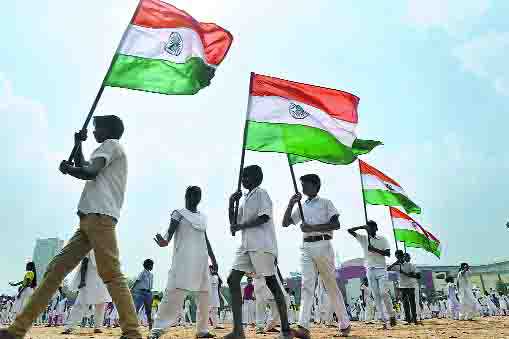
Nirmal Sandhu
IN the last one year this Republic has seen some momentous changes. Threats to democracy and its institutions have grown. The good thing is these have also activated upholders of democracy, including some judges of the Supreme Court. That is reason enough for satisfaction that things won’t fall apart.If the recent protests and elections are any indication, the number of people who were once in thrall to a strong, decisive leader is declining. The price they are required to pay for having a strong man at the helm has turned out to be quite hefty. They find that on the pretext of nabbing black money holders and tax evaders, Inspector Raj has been brought back. The Aadhaar link to every bank account, investment and transaction means any time some official may find something amiss and haul them up. Their money in the bank is no longer safe. Individual rights and freedoms are in danger of being trampled over by a creepy, ever-expanding State. There is a sense of fear in the street. Repeatedly getting reminded of being a Hindu or a Muslim or of having a non-existent majority-vs-minority conflict does not give one a nice feeling at the end of the day. That a joyous moment like carol singing on Christmas could invite a sedition charge is not something even the majority is used to. Such changes in daily life are not what they had bargained for while voting to power the strong leader who had promised development. The unintended baggage they have acquired in the process now weighs them down.A fast-growing economy that a less strong or even a weak leader would not have dared to disrupt could have thrown up opportunities for their young ones. Growth has been slowed down by ill-thought-out interventions of a leader bereft of sound economic advice. A strong leader gets to hear what he wants to hear.However, a Republic of fear coexists with a Republic of hope. Their number may not be large, but there are people who are beginning to see through political demagoguery and realise what harm politics of polarisation has caused to a life of social harmony, once taken for granted. Claims of sabka saath, sabka vikas sound hollow. Manipulation of institutions through loyalists at key positions is causing irreparable damage to the Republic.All this could have been a reason for despondency but the national mood on this Republic Day is less than gloomy. As during the days of the Emergency, signs of hope are emerging. The strong leader no longer seems that strong, that invincible. The thought that he can be wrong too is sinking in. If Gujaratis today are not as enamoured of their former Chief Minister as they used to be for 12 and a half years, it should cause no surprise that Brand Modi is losing part of the shine in other parts of the country as well.By now the consequences of a botched-up demonetisation have all been lived through. A tax reform like the GST has caused so much discomfort and pain because the priority of the Central and state finance ministers was not to simplify the tax structure for the benefit of the taxpayer but to extract maximum from him to fill their coffers so that voters could be lured with freebies.Farmer protests in BJP-ruled states such as Gujarat, Madhya Pradesh and Maharashtra point to a growing disenchantment with the strong leader the country had so overwhelmingly voted to power only some four years ago.Those following political developments closely have got used to, or rather got tired of, the coarseness of the political discourse. They have realised that the “demons” the strong leader is supposedly fighting on their behalf are his own creation. Muslims now avoid overreacting to provocations by foot soldiers of the Sangh Parivar. The so-called threat from Pakistan has lost its emotive power to work up arm-chair watchers of verbal contests on TV as the one from China has turned out to be an overdone thing. While sections of society are leading a life in the shadow of fear, street vandals protesting the release of the film Padmaavat have no fear of the law or of the strong leader. They are allowed a free run in BJP-ruled states and state governments are unlikely to make them pay for the damage to public property. By clearing the film for release, the Supreme Court has once again proved that it is the last hope for ensuring a civilised life when ruling politicians abdicate their constitutional responsibility. Grievances, if any, have to be sorted out in court, not on the street.Although large sections of the media have fallen in line, tamed by the lure of advertisements or veiled threats, some remain defiant. First the murder of Bengaluru journalist Gauri Lankesh, then the CBI raids on NDTV and then the registration of an FIR against The Tribune and its reporter were crude attempts to browbeat and silence some of the very few independent voices left in the profession.Ordinary people caught in the daily grind may not fully appreciate the seriousness of the shrinking space for civil rights and liberties, including freedom of the media, but still the murder of Gauri Lankesh and the action against NDTV and The Tribune galvanised a great many public-spirited journalists and activists nationally. That is another reason for hope that the Republic will be safe in the years to come.The most significant reason for hope is the way the four senior-most judges of the Supreme Court broke with tradition and chose to speak up in public. They took the unusual step after having exhausted all available means of redress. In fact, it would have been more distressing and harmful to the Republic had they quietly continued with their job, unmindful of attempts to seek favourable outcomes for certain politicians.What Justice Chelameswar has said can, in fact, be a general guiding principle for individuals holding public offices: “I don’t want that 20 years later, some very wise men in this country blame them that they (Chelameswar, Ranjan Gogoi, Madan Lokur and Kurien Joseph) had sold their souls; they did not take care of this institution; they did not take care of the interests of this nation”. If every institution, every public office in this country has individuals who follow the law and the rules, and refuse to be a party to any morally wrong or illegal act or decision, it would become a lot harder for colluding politicians and bureaucrats to deviate from the established procedures, break the law and get away with it.Nirmalssandhu@gmail.com

Khadga Prasad Oli will return to power as the 11th Prime Minister of the ‘Federal Democratic Republic of Nepal’ since the abolishment of the Shah-monarchy in 2008. The veteran leader of the Communist Party of Nepal (Unified Marxist-Leninist) or CPN UML, was earlier Prime Minister of Nepal from Oct 2015 to August 2016, besides having been previously Nepal’s foreign minister (2006-07) and home minister (1994-95).
In the elections in November-December 2017, the ‘Left Alliance’ of the two principal Communist parties, Oli’s CPN-UML and Pushpa Kamal Dahal’s CPN (Maoist-Centre), won a joint victory in the bicameral legislature (House of Representatives and National Assembly) and in the state assemblies. These elections were closely watched by both Delhi and Beijing as, for once, a stable leadership was expected in Kathmandu given the restraining clauses that have come into play after the adoption of the new constitution in 2015.
The landlocked Himalayan country, flanked by competing geopolitical rivals China and India, will inevitably witness hectic pitching for influence and strategic sweepstakes. The centrist Nepali Congress was perceived to be pro-India, whereas the nationalistic, rejectionist and assertive tenor of the ‘Left alliance’ was believed to be the preferred dispensation of the Chinese. Therefore, for India, the challenge of handling and managing Oli in his second coming as prime minister.
‘Dhruba’, as Oli was known in his younger days, was a precocious chess player and given to writing fiery nationalistic poems – both early indicators of his proclivity and dexterity in the rumble-tumble of Nepalese politics, which has evolved from the absolutism of the monarchy era, the anarchical spirit accompanying the Communist/Maoist resistance to, finally, reconciliation and adapting to the democratic framework and the geopolitical opportunities of today.
Oli’s baptism into the violent communist resistance in 1966 saw him rise quickly within the ranks and play a leadership role in the infamous Jhapa rebellion that saw the beheadings of feudal landlords, which ultimately put Oli behind bars for 14 years. The providential timing of his release coincided with the greenshoots of the democratic movement in Nepal, and Oli was poised to take the centre stage in Nepalese politics, first as the central committee member of CPM-ML and then as the founding chairman of Prajatantrik Rashtriya Yuwa Sangh.
The roller-coaster ride of Nepalese politics soon saw Oli become prime minister in Oct 2015, supported – incredibly – by the royalist and pro-monarchy Rashtryia Prajatantra Party and the Madhesi Rights Forum-Democratic, besides the Maoists and 13 other smaller parties.
Ironically, it was the Maoists who pulled the rug from under Oli’s feet in less than 10 months, only for the two to soon join hands and form the ‘Left Alliance’. The intra-Left intrigues notwithstanding, Oli has firmly established his personal credentials as the leading voice against the centrist Nepali Congress, taking an ultra-nationalist and unsubtly anti-India stand (and by default, pro-China), aided by popular perceptions of Delhi’s hand in the debilitating and humiliating economic blockade of 2015.
Oli, the Machiavellian politician, had been quick to nail his political stance to the powerful and restive emotions of ‘national pride’ to establish the damaging perception that the Nepali Congress was hand-in-glove with Delhi, and posited his own proximity and preference with the ever-willing Beijing as a credible alternative. The unsavoury term ‘foreign hand’ in Kathmandu, has acquired an unmistakable Indian context and the inherent message in the optics of the prime minister-in-waiting making a surprise visit to the Chinese trade and transit point in Rasuwagahdi, makes Delhi wary of Oli’s second coming.
Traditionally, the first international visit by every Nepalese prime minister has been to India. Oli’s move to visit Rasuwagahdi-Kerung on the Nepal-China border, which is symbolically seen as an alternative to Birgunj on the Nepal-India border, holds vivid portents of Oli’s ‘balanced’ foreign policy!
Beyond the political tactics of pitchforking China into the Indo-Nepalese realm, the reality is that over two-thirds of Nepal’s trade is still with India. With life-sustaining imports a staggering nine-times that of exports, the Chinese are still far from offering a viable and sustainable option to that of India. Oli, the quintessential politician would know the limits and consequences of pandering to the Chinese beyond a point (for example, the fate of neighbouring Tibet and, more recently, Bhutan). Similarly, Delhi, too, must understand the sensitivities of ‘big-brother’ perceptions and those of interference in the internal affairs of Nepal. Unlike the expansionist agenda of China, there is much in common and comfort in dealing with India – the civilisational, cultural and fraternal connect that has overridden many challenges in Indo- Nepal relations since Independence.
Beyond economics and diplomacy, the emotive umbilical cord of the irrepressible Nepali Gorkhas in the Indian armed forces is the best example of Indo-Nepal trust and faith in each other. Befittingly, the serving and the previous chief of the Indian Army have been proud Gorkha officers – with the incumbent General Bipin Rawat hailing from 5/11 Gorkha Rifles, which is primarily composed of Rais, Limbus and Sunuwars from Nepal. General Rawat is a second generation Gorkha officer. His father Lt Gen L S Rawat was also from the Gorkhas. This, besides the reciprocal dignity of freely allowing citizens to travel between the two nations, is unparalleled among Asian countries.
Oli does have a certain ideological and political agenda that needs to be recognised and accommodated with care, dignity and requisite investments. The wounds of his first innings are still fresh and Delhi must tread carefully to address the same, whilst explaining in no uncertain terms the futility of overplaying the Chinese card, given its track record in the neighbourhood and globally. Nepal is truly a ‘natural’ ally of India from all possible angles, and Oli, a thoroughbred politician, should know that and benefit from it.
(The writer is a former Lt Gen in the Indian Army and former Lt-Governor of Andaman and Nicobar Islands and Puducherry)
The recognition that we as a people have a history of and a reputation for combat that is matched by few others in the world could ironically be the way forward to peace.
There is a famous anecdote that veteran soldiers tell about the Indian Army. During the days of the North African campaign during the Second World War, if you walked into the bar of the famous Shepheard’s hotel in Cairo, the barman always asked you which division you belonged to. If you answered Fourth Indian Division, you got a free drink on the house. The story might be apocryphal, but it illuminates a long forgotten bit of our own past – the glorious story of the Fourth Indian Division – widely regarded as one of the “greatest fighting formations in military history”.
The Prelude
The modern Indian Army as we know it owes its origin to the British Raj. It was not a force conceived to fight an all out overseas war but rather meant to be more of a policing force to keep the turbulent subjects of the Raj under check, while also keeping an eye out over the North West Frontier at Russian machinations. Even as late as the end of the First World War, Britain envisaged the North West Frontier with Afghanistan, and Bolshevist Russia beyond, as the major threat to India and hence the training and strategic planning of the Indian Army focused on deployment in this region rather than for any major global conflict. No one then could have foreseen another world war looming in the near future. But such are the ways of men and nations, that the crises of the future can seldom be foretold. When the World War Two broke out in 1939, the Indian Army found itself under-equipped, untrained and grossly unprepared to tackle the challenges posed by professional, highly trained and highly mechanised armies fielded by Germany and Italy.
Despite the well renowned courage and valour of the Indians, it was becoming apparent to British military planners that wars were no longer about just the human factor. The 1920s and 1930s had seen rapid advances in all spheres of industry and technology, and the Germans in particular were at the forefront of building the military-industrial complex. On the other hand, the lack of modernisation in the Indian Army was woeful. Britain had spent considerable expenses on modernising its own army to keep up with developments in Europe, acquiring tanks, anti aircraft guns and mechanising almost its entire cavalry from being horse mounted. By comparison, the Indian cavalry still remained horse mounted and its artillery guns were still mule drawn, and it possessed no anti-tank or anti-aircraft weapons. Such a force was to be pitted against state-of-art German Panzer tanks and Italian guns in North Africa.
Contrary to popular belief, the martial races theory was not what always determined recruitment to the British Army. The War was like a beast hungry for human blood and it devoured men like a forest fire devours dead grass. The British empire stretched to its limits in fighting wars on three fronts – Europe, North Africa and the Far East – needed men to feed its war machinery and these men came from India irrespective of their caste, region or religion. Against the highly mechanised forces of the Germans, men were like cannon fodder and the British could not afford to be choosy in whom they recruited. So, the martial races theory went for a toss as soon as the war began. Division sized Indian Army units had mixed composition from the various Indian regiments.
Thus while it is difficult to ascertain the exact regiment wise make up of the Fourth Indian Infantry Division, we know from various despatches and records that almost all the ethnicities of the Indian sub-continent were represented in it – Sikhs, Dogras, Rajputs, Pathans, Balochis, Marathas, Bengalis, Tamils, Garhwalis, Gurkhas – all fought shoulder to shoulder, distinguishing themselves in a far away land. Further, nearly a third of its strength was also provided by British troops. The fact that such a varied body of men so different in race, religion and language could fight as one, stood testimony to the time honoured traditions of the Indian Army and the superior soldierly qualities of the Indians.
The War In North Africa
As soon as the War broke out in Europe, the well prepared German Army drove through France like a hot knife through butter. By 1940 all French resistance had collapsed and the Germans now stood eyeball-to-eyeball against the British nation. A threatened Britain drew all her best forces for the defence of her homeland, leaving the defence of her vast and strung out empire to the Indian Army. With France under Axis occupation, Italy now focused its attention towards British possessions in North Africa.
In the Western Desert, the British were in control of Egypt while the Italians ruled over Libya and Ethiopia. The North African Campaign began in August 1940 when Mussolini ordered the Italian forces based in Libya to invade Egypt. A further strategic objective of the Italian push into Egypt was to capture the Suez Canal – the crucial nerve centre of global shipping in those days. Whoever controlled the Suez controlled the lucrative shipping routes to the east, and since most of Britain’s empire lay to the east of the Suez, it could not afford to lose it. All that stood between Mussolini and the Suez Canal was a few British and Australian troops and the hastily assembled, poorly equipped Indian Army.
The Fourth Indian Infantry Division was the first formation to leave India for overseas service in Second World War, with the first tranche arriving in Egypt in August 1939. Its divisional insignia was a diving red eagle on a black patch, and its divisional motto was Jo Hukam – That Which Is Ordered Shall Be Accomplished – a motto which it was to live up to in all except its final and most tragic mission, where the famous Red Eagle was to fail miserably. But that comes later.
As the war raged on, the Fourth Indian Infantry Division came to be the most experienced division in the Middle East, with British Army commanders repeatedly falling back on the ‘Red Eagle’ for critical missions. The British forces in the region consisted primarily of the Western Desert Force under the Middle East Command led by General Archibald Wavell (later to be Viceroy of India). The Western Desert Force in turn was comprised of the Fourth Indian Infantry Division and the British Seventh Armoured Division – totaling 36,000 soldiers and 65 tanks in all. This force was to face the brunt of Mussolini’s 10th Army comprising of 1,50,000 infantry, 1600 guns, 600 tankettes (small tanks the size of a car used mostly by the Italian army) and 331 aircraft. At the outset, the odds seemed astronomical. The Indian and British soldiers were outnumbered almost five to one while lacking in artillery, armoured and air support as well. But it was precisely in fighting such incredible odds that the Fourth Indian Infantry Division earned its legendary reputation as one of the greatest fighting forces ever known in history.
The Desert Fox vs The Sepoy – The Defeat of Erwin Rommel
Nicknamed Operation Compass, the mission to drive the Italians out of North Africa lasted from December 1940 till February 1941. In February 1941, the division saw itself engaged in a bitter battle with the Italians in the town of Keren in Eritrea, located at the eastern edge of North Africa. Being their last foothold on the continent, the Italians fought furiously. It was here that Subedar Ricchpal Ram of the 4/6th Rajputana Rifles won the Victoria Cross, leading a gallant charge on the Italian positions despite being grievously wounded and having his foot blown off. So fierce was the battle of Keren, and such was the valour of Fourth Indian Division that once the battle was won, geographical features in East Africa were named after regiments of the Indian Army – Sikh Spur, Rajputana Ridge and so on.
By the time the Fourth Indian Division was done with its work in the Western Desert , it had stopped the Italian advance dead in its tracks, bringing the formidable 10th Army to its knees and forcing it to surrender. The exploits of the Fourth Indian Division led Anthony Eden, later to be the British PM, to exclaim, “never before has so much been surrendered by so many to so few”.
The following winter the Fourth Indian Division distinguished itself in Operation Crusader in which the German forces were led by none other than the famous Erwin Rommel – known as the Desert Fox – and his AfrikaKorps that was till then considered invincible. Rommel’s reputation as a commander was legendary and added to the technological and numerical superiority of the Axis forces, the result of the confrontation looked like a foregone conclusion. But once the Indians entered the battle, all strategic calculations of the enemy went for a toss. A British officer described the soldiers of the Fourth Indian Division fighting fearlessly against numerically superior German forces thus :
“After a while I saw the platoon advancing across the valley, turn west across a road, then in open formation return to attack another strongly held feature. I could not stop them…all we could do was provide supporting fire. What a sight! Twenty Five men attacking a high hill studded with enemy trenches…the enemy..300 or more of them..threw down their arms and surrendered to 25 men.”
Such intrepid heroism was to become the hallmark of the Fourth Indian Division as it stunned the enemy by its sheer fearlessness. Operation Crusader was the first victory, albeit a narrow one, by the British forces over the German ground forces in the Second World War, and more importantly the myth of invincibility of Rommel’s AfrikaKorps was forever shattered by the indomitable Indian sepoy. Rommel’s AfrikaKorps finally surrendered on 11 May 1943 to Lt Col C J Showers of the 1 Battalion, 2nd Gurkha Regiment, thus ending the war in North Africa for good. It’s work in North Africa completed the Red Eagle was then deployed to Syria. Later in 1944 they saw action in Italy where they fought at the famous battle of Monte Cassino along with the newly arrived American troops.
The Red Eagle saw its last major action of the Second World War when it was transferred to Greece which was then in the throes of a civil war. As the Germans withdrew from Greece, it became the battleground for the new war that was to engulf our world for the next 50 years – the Cold War. Soviet backed Leftist guerillas got embroiled in a bitter conflict with the American and British backed Greek government army. The Fourth Indian Division was involved in maintaining order during the bloody conflict which was in effect the first major conflict of the Cold War.
The Partition Of Punjab – The Fall From Grace Of The Red Eagle
By 1946 the Second World War was well and over but events in India had taken a precipitous turn. Imminent British withdrawal from India threatened to plunge the subcontinent into a whirlpool of violence. In particular Punjab, which had provided the bulk of recruits to the British war effort was now convulsed with a wave of violence as the newly returned soldiers who had not a few years ago fought shoulder to shoulder as brothers in arms now turned against each other in a frenzy of communal violence. The Fourth Indian Division was once again pressed into service, this time rechristened as the Punjab Boundary Force and tasked with stemming the communal violence in Punjab. However for the first time in its glorious history, the famous Red Eagle was to fail in its mission.
It’s by now legendary divisional motto of Jo Hukum – That Which is Ordered Shall be Accomplished – which it had lived up to throughout the deadliest conflict in human history was for the first, and the last time to fail. Where it had once fought insurmountable odds against the white man in Europe and in Africa, the Fourth Indian Division proved incapable of stemming the madness that had consumed its own people. The riots in Punjab, often led by disbanded army men who used tactics learned in the Army to organise genocidal violence, showed no sign of abating. As a result the Punjab Boundary Force was ignominiously disbanded soon after. With Partition, the Fourth Indian was divided, like many other British army divisions between India and Pakistan. Fifteen Battalions of the Fourth Indian Infantry Division were apportioned to India while 10 went to Pakistan where its remnants served with distinction.
Field Marshal Archibald Wavell, Commander-in-Chief of the Indian Army and later Viceroy of India summed up the achievement of the Red Eagle:
“…. The Fourth Indian Division will surely go down as one of the greatest fighting formations in military history: to be spoken of with such as The Tenth Legion, The Light Division of the Peninsular War, Napoleon’s Old Guard….A mere summary of its record is impressive: in five years it fought nine campaigns, traveled more than 15,000 miles, suffered over 25,000 casualties, captured upwards of 150,000 prisoners…. Its campaigns include the great victory of Sidi Barrani,…a gallant costly assault at Cassino against defences even more formidable than at Keren…the successful breaching of the Gothic Line….The Fourth Division has a claim on history even beyond its fighting capabilities…. and its commanders will always salute one of the greatest bands of fighting men who have ever served together in this troubled world of wars and warriors.” (Das:380)
The British Indian Army – A Conflicted Legacy Of Heroism And Valour
As a nation we are yet to come to terms with our men who went to war for the British. Nationalism all over the Third World were shaped to a large extent by their opposition to colonial ‘other’. The presence in this narrative of a large body of men who went to war for the supposed oppressor acts like a non-sequitur, disrupting the neatly drawn contours of the nationalist narrative. What does one make of these men who fought heroically in places far and wide, who carried proudly the name of the Indian nation where it was never known, but drew their pay from the hated colonial master? For the Indian national movement this posed a tricky question.
In the years immediately following Independence, this question was dealt with by shoving it under the carpet. In the utopian Nehruvian worldview, there were to be no more wars and hence the inconvenient question of accommodating the mercenary-warriors of yore was best left unattended. All of a sudden the millions of Indian soldiers who fought heroically in the two World Wars found themselves on the wrong side of history, their stories destined to be forgotten for forever. It took almost half a century, four full blown wars with our new neighbours, and efforts by academic movements such as the Subaltern Studies group and various oral history projects to once again bring to the centre the question of soldiers of the British Indian Army and their place in the national imagination. The debate is now slowly moving from the academic to the popular realm, as shown by the outcry over Dunkirk, and the sudden flux of historical works relating to the Indian contribution to the two World Wars.
The presence of Bose as a towering figure in Indian nationalistic pantheon further complicates the picture. Bose was a man who raised his own ‘Indian’ Army and joined hands with the Nazis against the British. The Indian National Army was promptly accommodated in the national narrative and accorded the status of heroes. However, the placement of a national hero on the same plane as a genocidal dictator sat uneasily, while leaving the question of the British Indian Army still unanswered. These unresolved conflicts deeply polarised the Indian psyche paving the way for ideological conflicts of the future.
These mercenaries of the Raj also complicate the Gandhian conception of Indians as a peace loving nation that was to form the bedrock of the Gandhi-Nehruvian ‘idea of India’. This was a conception that outraged the Hindu far right and perhaps led to the birth of a militant Hindu nationalism whose entire raison d’etre seemed to be to disprove the Gandhian pacifist conception of Indian history. Both the Gandhian notion and its reactionary far-right counter, in fact, arose because each completely chose to ignore the reality.
Perhaps, because, each was born out of elite politics removed from the ground realities, neither cared to factor in the ubiquitous peasant-soldier in its ideological calculations. That the British were able to raise the largest volunteer army ever raised in the history of mankind from India speaks volumes about the martial culture of the land. Soldiering has throughout Indian history been viewed as a right and honourable profession. The British soon realised that such a cultural predisposition to war, violence, and soldiering made Indians among the finest soldiers on earth, and used the knowledge to build their empire on the shoulders of the humble sepoy.
The Mahatma on the other hand, for all his love for the masses, failed to account for the millions of Indians who relied on violence for a living, and excelled at it. Professional soldiers and trained killers, these were men, who took their pay from the British, did what they were told to, and were proud of it. As the historian Raghu Karnad puts it – “the Indian army was a body of professional soldiers trained to uphold the illegal occupation of not just their own land but of others as well”.
The image of the disciplined professional soldier fighting in the deserts, jungles, trenches, and quietly accepting death over dishonor contrasted sharply with the kurta and corduroy clad men sitting in ornate chambers and plotting their sinister schemes to divide a nation in their lust for power. Today, we would know exactly which side we would root for in such a picture. In the turbulent 30s and 40s though, such an image only served to confound the neat narratives that all stakeholders in the political game were trying to construct. Since no one could make any sense of him, nor assign to him an easily recognisable label of hero or anti-hero, the soldier who went to war was thus relegated to a vacuum of the national imagination where he has been forced to remain till this day.
An acceptance of our men who went to war for the Raj could perhaps offer a solution to the bitter ideological battles we face today. We need to reconcile ourselves to the complex web of loyalties that define the nature of human interactions, and which are impossible to bracket into simple nationalistic binaries. Inherent to such reconciliation is the idea that the sepoy could draw his pay from the white man and yet have his heart beat for an independent Indian nation. The recognition that we as a people have a history of and a reputation for combat that is matched by few others in the world could ironically be the way forward to peace. These were our men, and these are our histories. It is time we own up to them.

